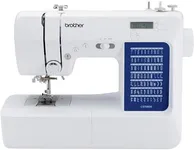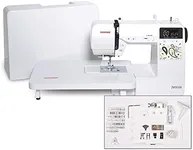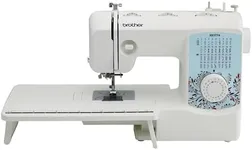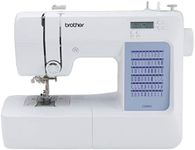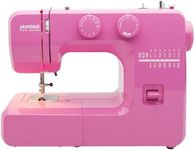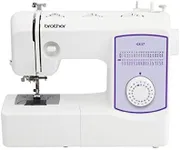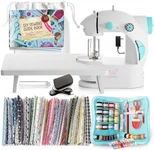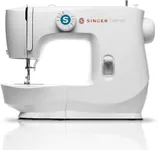Buying Guide for the Best Beginner Sewing Machine
Choosing a beginner sewing machine can feel overwhelming, but focusing on your needs and understanding the key features will help you make a smart choice. As a beginner, you want a machine that is easy to use, reliable, and versatile enough to handle basic projects. Think about what you plan to sew most often, such as clothing repairs, simple garments, or home décor, and let that guide your decision. Remember, the best sewing machine for you is one that matches your current skill level and can grow with you as you learn.Stitch OptionsStitch options refer to the different types of stitches a sewing machine can make, such as straight, zigzag, and decorative stitches. This is important because more stitch options give you greater flexibility for different projects. For beginners, a machine with a handful of basic stitches (like straight, zigzag, and buttonhole) is usually enough. Machines with dozens of stitches can be tempting, but too many options can be confusing at first. If you plan to do simple repairs or basic sewing, stick to a machine with essential stitches. If you want to explore creative projects, a few extra decorative stitches might be helpful.
Ease of UseEase of use covers features that make the machine simple to operate, such as clear threading guides, automatic needle threaders, and easy-to-understand controls. This is crucial for beginners because it reduces frustration and helps you learn faster. Some machines have digital displays and push-button controls, while others use manual dials. If you prefer a straightforward experience, look for machines with clear instructions and intuitive controls. If you enjoy learning new technology, a machine with digital features might suit you.
Speed ControlSpeed control lets you adjust how fast the machine sews, which is important for beginners who need to practice control and accuracy. Some machines have a foot pedal that controls speed, while others offer a speed slider or button. Lower speeds are great for learning and working on detailed areas, while higher speeds are useful for long, straight seams. If you’re new to sewing, a machine with adjustable speed control can help you build confidence and avoid mistakes.
Automatic FeaturesAutomatic features include things like automatic needle threading, automatic buttonholes, and automatic thread cutting. These features save time and make sewing less intimidating for beginners. For example, automatic needle threading helps you avoid the frustration of threading the needle by hand. If you want a smoother learning experience, look for a machine with a few helpful automatic features, but don’t feel pressured to get every possible option.
Weight and PortabilityWeight and portability refer to how heavy and easy to move the sewing machine is. This matters if you need to store your machine between uses or take it to classes. Lightweight machines are easier to carry but may be less stable during use, while heavier machines tend to stay in place better. If you plan to sew in one spot, a heavier machine is fine. If you need to move your machine often, look for a lighter model with a handle.
Build QualityBuild quality is about how sturdy and durable the sewing machine feels. A well-built machine will last longer and handle more types of fabric. Some machines have more metal parts, while others use more plastic. For beginners, a machine with a solid feel and good reviews for reliability is a smart choice. If you plan to sew heavier fabrics like denim, make sure the machine is strong enough to handle them.


